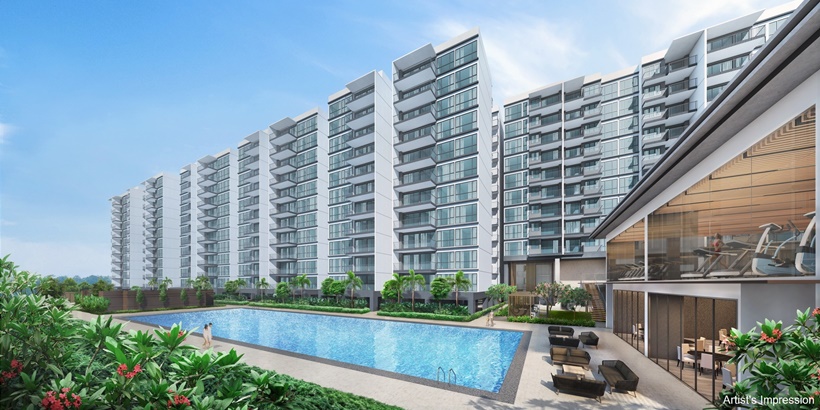In Q2 2019, the PropertyGuru Property Index – which tracks supply-side pricing and volume of non-landed private residential properties in Singapore – saw over 35 percent rise in the supply index, while concurrently registering a 13.43 percent dip in the pricing index from the previous quarter.
Sales of new mass-market projects rose by 8% in Q2 2019, and this was led by two mega-projects, namely the 2,203-unit Treasure at Tampines and the 1,140-unit The Florence Residences, according to URA data. By definition, mega-projects refer to developments with over 1,000 residential units.
Launched in late March, Treasure at Tampines occupies the site of the former Tampines Court HUDC estate and is said to be the largest condo development in Singapore. Units at the development sold at an average price of $1,280 per square foot (psf) durings its launch. It is also one of the most affordable new projects in 2019, and is one of a handful of new projects that are selling below the $1,300 psf threshold.
Meanwhile, units at The Florence Residences transacted at an average of $1,450 psf during its launch in early March. Located at Hougang Avenue 2, the condo is a redevelopment of the former Florence Regency privatised HUDC estate.
Given the large volume and the relatively affordable prices of units at these mega-projects, we believe that their entry into the market from the end of the previous quarter could have impacted our overall PMI in Q2 2019.
For instance, we believe that the influx of new listings from these mega-projects could have resulted in a spike in our supply index – which captures the volume of listings on PropertyGuru, while concurrently leading a decline in our pricing index – which captures the asking prices of property listings on PropertyGuru.

The 2,203-unit Treasure at Tampines is said to be the largest Singapore condo ever.
Download the full 2Q 2019 PMI report here!
Supply
In the Q2 2019 PropertyGuru Property Index, we saw the number of listings rise by 35.29 percent from the previous quarter. This is in contrast to the 13.35 percent dip in supply in Q1 2019, during which developers were observed to be holding back on new launches.
Pricing
Conversely, we saw a 13.43 percent dip in the pricing index in Q2 2019, compared to the previous quarter. This stands in contrast against the latest URA flash property price index (PPI) figures, which saw private home prices rise unexpectedly following two consecutive quarters of decline.
As mentioned, we attribute this contrast to the unprecedented number of new listings from these mega-projects, and the decline in our pricing index is unlikely to be any indication of how private home prices will behave moving forward.
Download the full report and get The Guru View!
Where Is The Market Headed Next?

While a contrast was observed between the PropertyGuru and URA indices, we did note some consistency when we zoom into specific market segments.
For instance, both indices registered an overall uptrend for home prices in the Rest of Central Region (RCR) or the city fringes. Based on URA data, RCR homes saw one of the highest quarterly growth rates at over 3 percent in Q2 2019.
We cross-checked against the PropertyGuru Pricing Index measured by region-by-region basis. While we saw varied results in districts that lie within the RCR boundaries, we noted an overall increase in prices within the market segment.
Meanwhile, our index registered a slight quarterly decrease of minus 0.5 percent for home prices in the Core Central Region (CCR) or the prime districts in Q2 2019. But when viewed from a year-on-year basis, the figures indicated a 5.52 percent growth.
In comparison, URA data showed a slight uptick in CCR home prices by 1.5 percent from the previous quarter. The uptick is likely supported by high-end transactions of new projects within the prime districts, which included the sale of 34 units at Boulevard 88 at a median price of $3,692 psf; 27 units at 3 Cuscaden Road (median price of $3,601 psf); and 17 units at South Beach Residences (median prices of $3,348 psf) in Q2.
Moving forward, we do not expect to see any sharp increase in home prices in the near term, particularly for projects that are moving slowly. Given the downward revision in global economic forecasts and rising unsold inventory to come from more launches, we also expect developers to remain prudent in their pricing strategy in the near term.
What does this mean for property buyers, sellers, and investors moving forward? Download the full report and get The Guru View!

